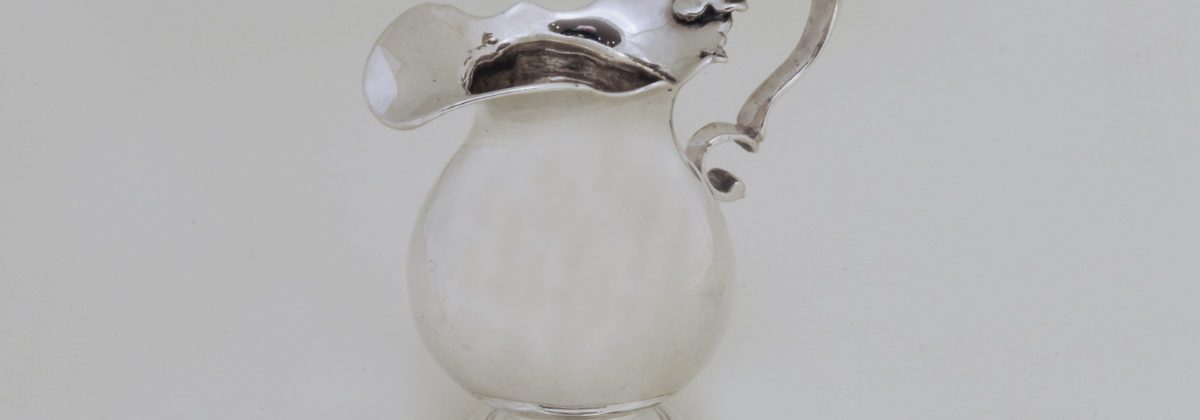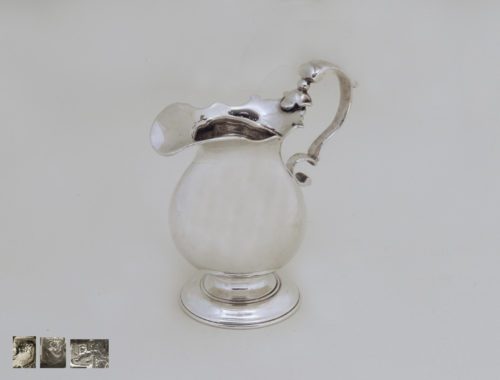Detaillierte Informationen
George II Silver Milk Jug
The small, pear-shaped silver milk jug stands on a round, profiled, cast, pedestal foot and has a buoyantly curved rim. The cast handle is made from two c-shapes and soldered to the corpus with the beautiful detail of a pearl-shaped knot.
Milk vessels were an important part of the tea ceremonial and tea services in the early eighteenth century. Especially during the period of George II they were in high fashion. During tea-drinking, a well-situated family could stage both social rank and wealth through the use of precious, silver accessories (e.g. the painting “A Family of Three at Tea”, probably by Richard Collins, Victoria & Albert Museum).
Literature
Grimwade, Ar., 1990, London Goldsmiths 1697-1837. Their marks and lives from the original registers at Goldsmiths’ Hall and other sources, GB: Faber and Faber [Grimwade3]
Gruber, Al., 1982, Gebrauchssilber des 16. bis 19. Jahrhunderts, Würzburg: Edition Popp
Jackson, Ch. J., 1911, An illustrated History of English Plate, ecclesiastical and secular in which the development of form and decoration in the Silver and Gold Work of the British Isles form the earliest known examples to the latest of the Georgian Period, Bd. II, Plauen i. Vogtl.: C.F. Schulz & Co.
Jackson, Ch., J., 1921, English Goldsmiths and their marks, London: MacMillan and Co. Limited
Schroder, T., 1988, English Domestic Silver, 1500-1900, London: Viking/The National Trust



